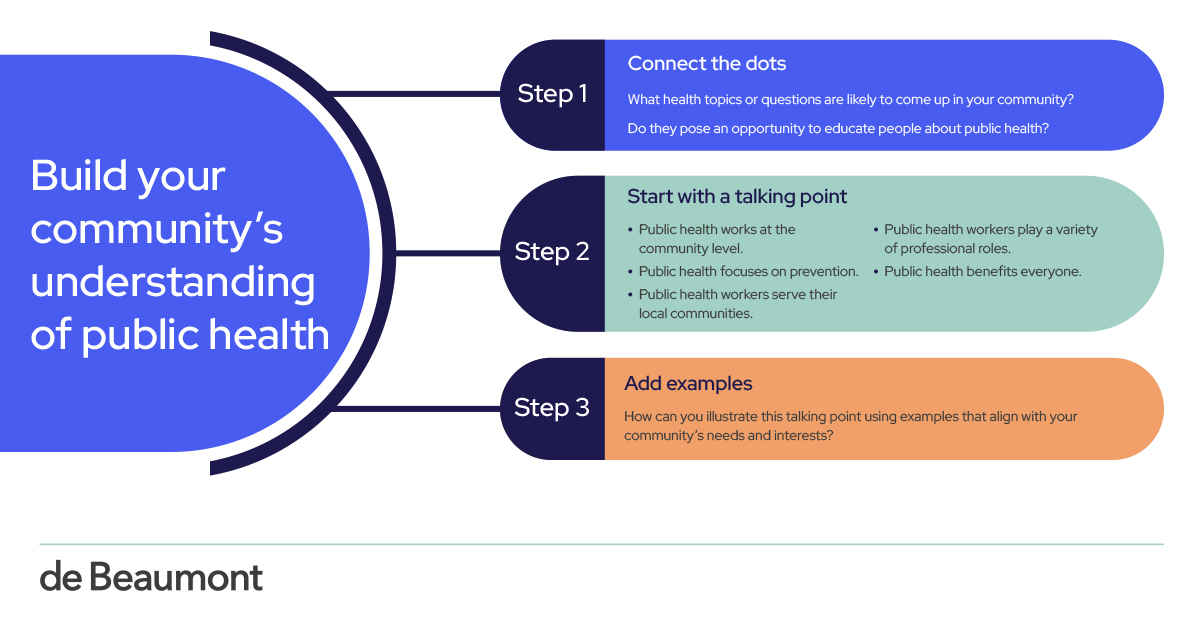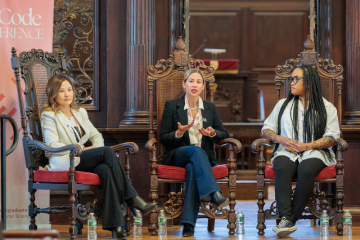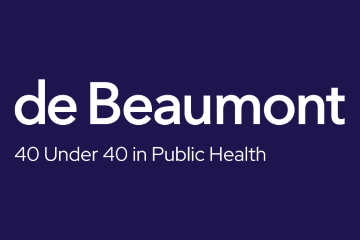Addressing five key knowledge gaps common among U.S. adults is critical to improving understanding of public health, according to new study and toolkit released this week by the de Beaumont Foundation and CommunicateHealth.
Communicating about Public Health: A Toolkit for Public Health Professionals offers messaging to address the knowledge gap, research-tested examples to make them more tangible, and tips for choosing and contextualizing examples that are most likely to resonate. The toolkit is based on findings from surveys, focus groups, and in-depth interviews with more than 1,600 U.S. adults.
Every day, public health professionals across the country work to promote well-being in their communities — but as the research showed, most people have limited public health literacy. As a result, they don’t realize the many ways that public health initiatives have improved their lives. This lack of understanding may contribute to public distrust of organizations that are working to protect public health. To bridge this gap, public health professionals need language to explain how public health works and how public health initiatives benefit people and communities.
Five Big Ideas about Public Health
The toolkit provides five big ideas — core concepts about the purpose and value of public health that many people don’t understand — with tested talking points to communicate about them.
Big idea: Public health works at the community level, while health care works at the individual level.
Talking point: While doctors and nurses care for individual patients, most public health workers care for the health of entire communities.
Big idea: Public health focuses on preventing people from getting sick or hurt.
Talking point: Because of public health, many serious diseases that were common in your parents’ or grandparents’ generations are now very rare in the United States. Public health workers take action to protect people from getting sick or hurt.
Big idea: Public health workers serve their local communities.
Talking point: Public health doesn’t do just one thing. Instead, public health workers take many different actions in their communities to help protect people’s health.
Big idea: Public health workers play a variety of professional roles — and many work behind the scenes.
Talking point: You may not always notice but public health workers include many people with different skills all working together to protect the community’s health.
Big idea: Public health benefits everyone.
Talking point: Public health is based on the idea that everyone should have an equal chance to be as healthy and safe as possible. Public health workers aim to help every member of the community.
Using the Messaging in Communities
“By communicating about specific health topics in a way that’s easy for people to understand and act on, public health professionals can make their communities healthier and safer,” said de Beaumont president and CEO Brian C. Castrucci, DrPH. “But public health organizations often struggle to convey the overarching goals and core concepts of their work, and that can lead to confusion and distrust, especially in an environment with politically driven narratives, misinformation, and a general distrust of government.”
The toolkit emphasizes the need to find and create opportunities to talk about public health. Formative research indicated that most public health professionals rarely communicate about public health writ large; more often, they discuss specific health topics or answer specific questions. By proactively connecting the dots between the topic at hand and the core public health concepts, professionals can improve public health literacy, build trust and understanding, and improve receptivity to future health messaging.
The toolkit also contains practical guidance to help public health workers share information across a variety of real-world situations, from choosing words that resonate to tailoring strategies for media, in-person conversations, and online channels.





